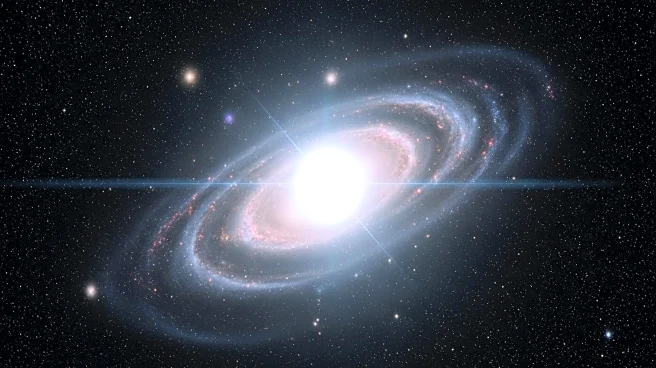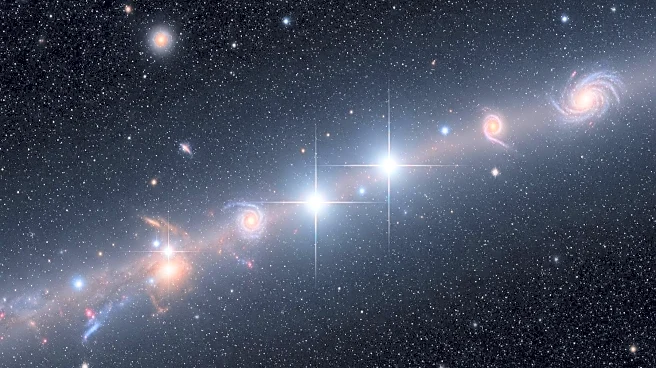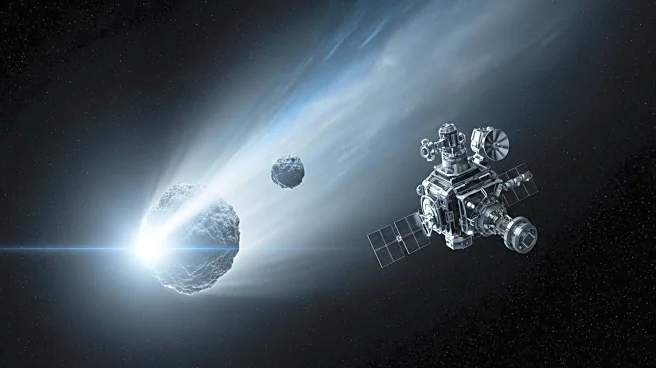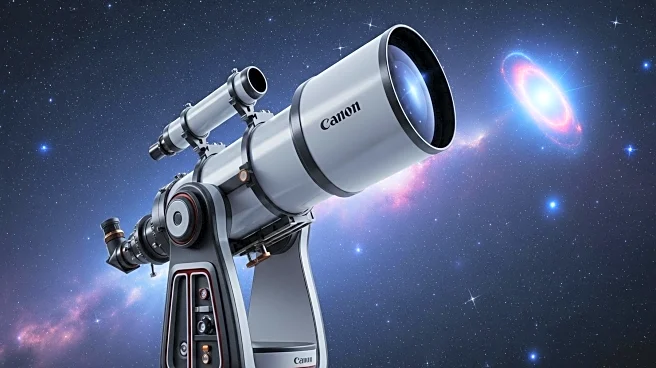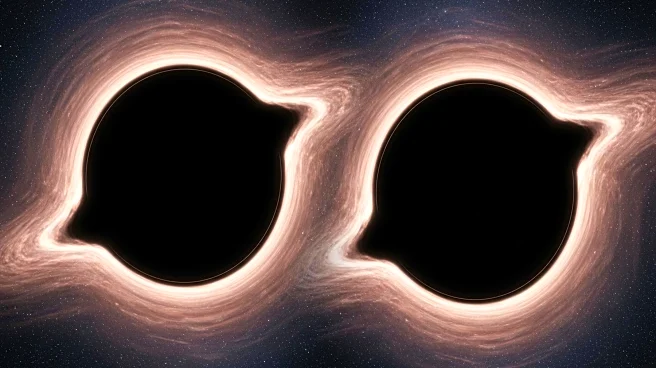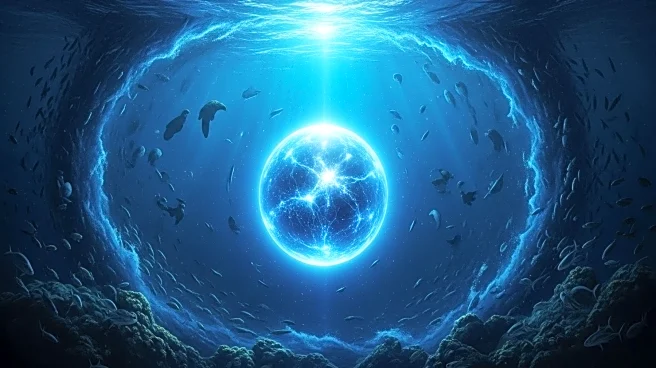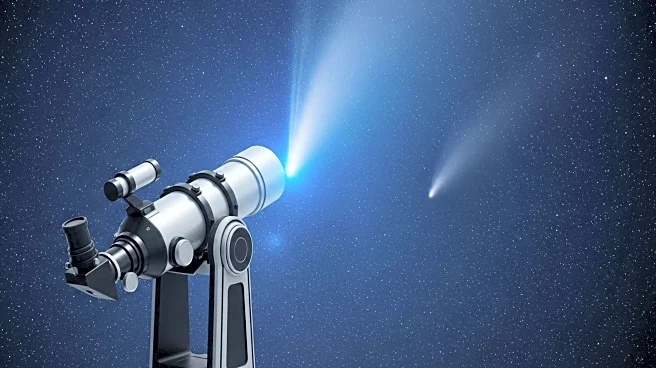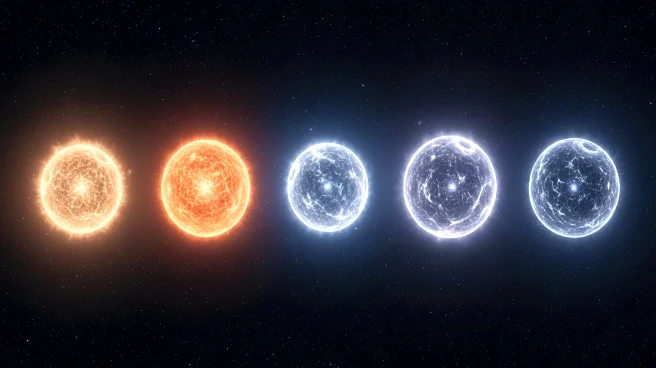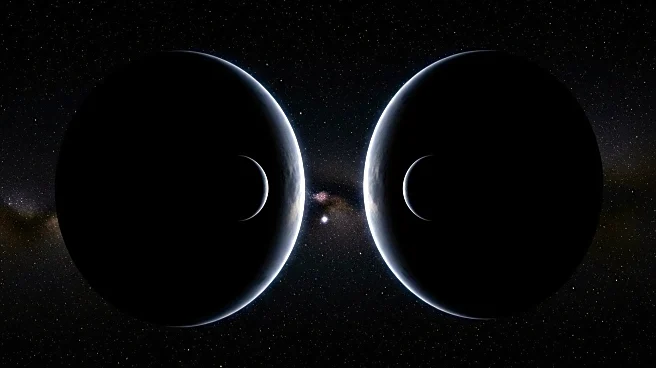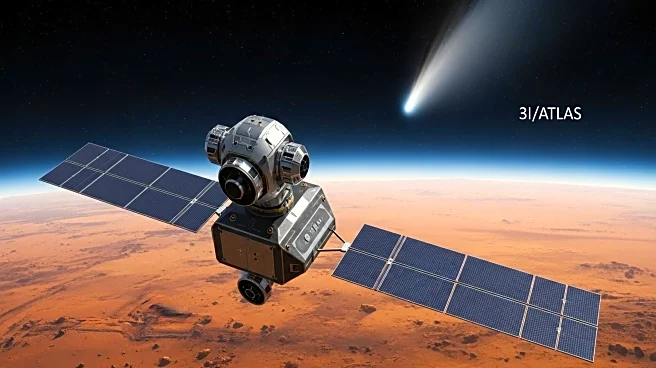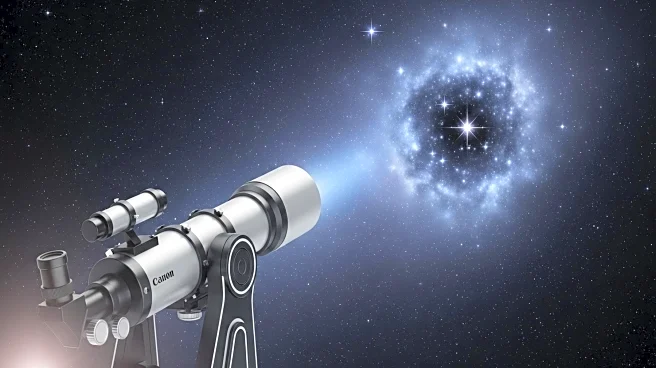What's Happening?
The James Webb Space Telescope (JWST) has captured images of a massive red supergiant star just before it exploded into a supernova, potentially solving a longstanding astrophysical mystery. The star, located in the galaxy NGC 1637, 38 million light-years from Earth, was first detected by the All-Sky Automated Survey for Supernovae in June. The supernova, named SN 2025pht, was identified by comparing historical Hubble Space Telescope data with new JWST images. The study, published in The Astrophysical Journal Letters, suggests that massive red supergiants, which are theorized to cause most supernovas, are often obscured by dust clouds, making them difficult to observe. The JWST's infrared capabilities allowed researchers to see through the dust, providing unprecedented detail of the star's environment before its explosion.
Why It's Important?
This discovery is significant as it provides new insights into the lifecycle of massive stars and the conditions leading to supernova explosions. Understanding these processes is crucial for astrophysics, as supernovas play a key role in the distribution of elements throughout the universe. The ability of the JWST to penetrate dust clouds and capture detailed infrared images marks a technological advancement, offering a clearer understanding of stellar evolution. This could lead to more accurate models of star behavior and the dynamics of galaxies, impacting fields such as cosmology and space exploration.
What's Next?
Researchers will continue to analyze the data from JWST to refine their understanding of red supergiants and their role in supernova events. Future observations may focus on identifying other obscured stars and comparing their characteristics to SN 2025pht. The findings could influence the development of new theories regarding star formation and death, potentially leading to breakthroughs in predicting supernova occurrences. Collaboration between telescopes and observatories worldwide will be essential to further explore these phenomena.
Beyond the Headlines
The discovery raises questions about the nature of dust clouds and their impact on astronomical observations. It highlights the importance of advanced infrared technology in overcoming observational challenges posed by cosmic dust. This could lead to ethical discussions on the allocation of resources for space exploration and the prioritization of scientific research. Additionally, the cultural fascination with space and the universe may be invigorated by such groundbreaking discoveries, influencing public interest and educational initiatives.
